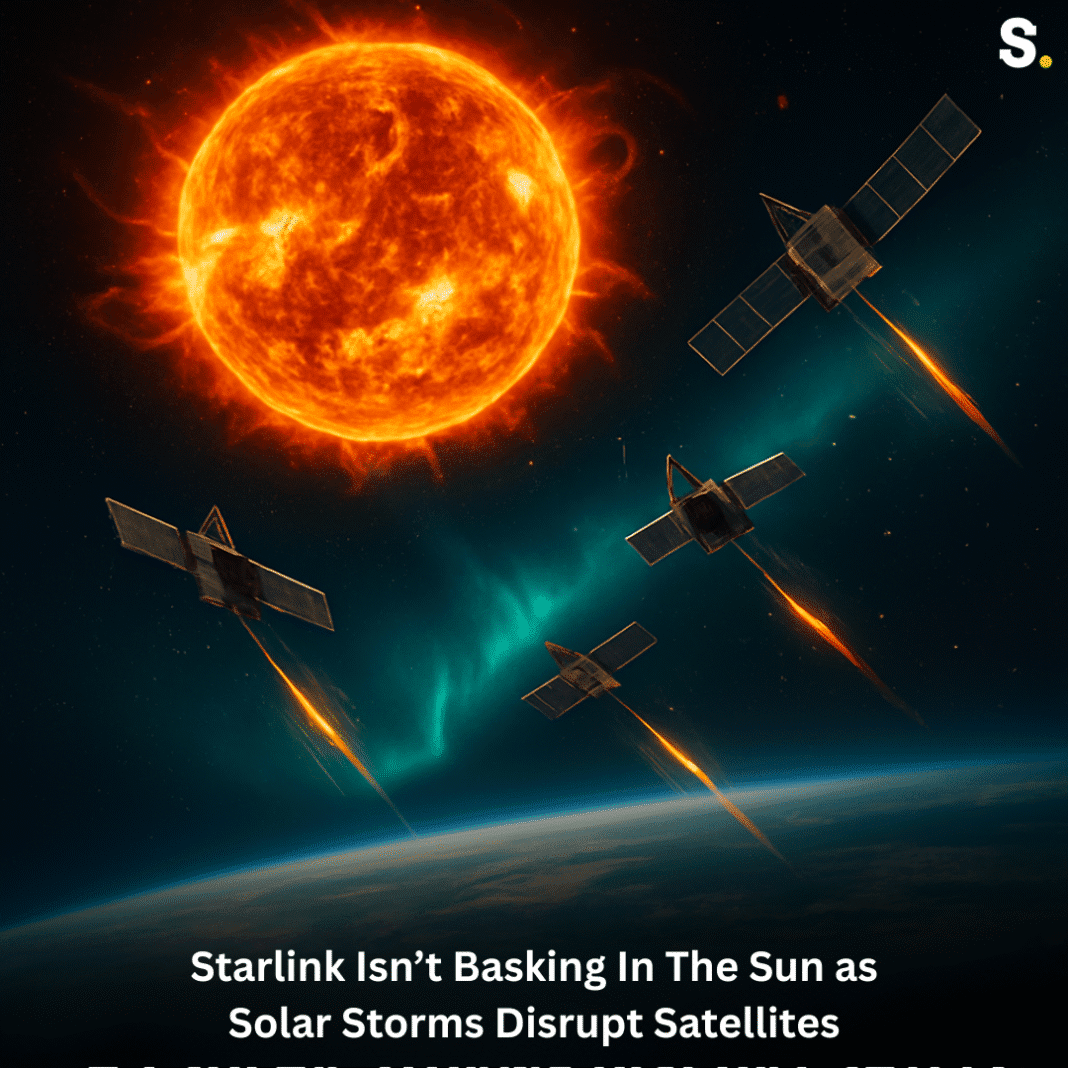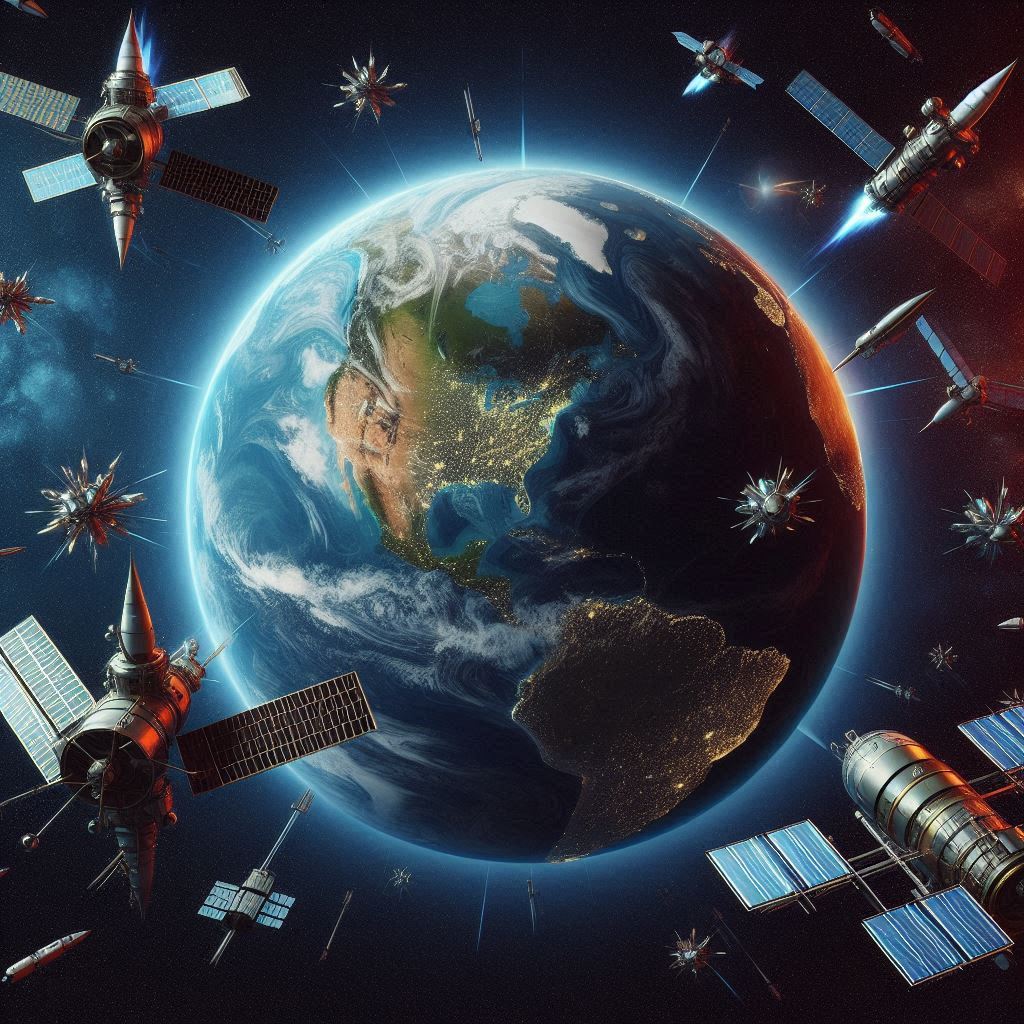The Sun is now more active than it has been in over a decade. This intense phase is part of its natural cycle, which repeats every 11 years. In late 2024, the Sun reached a peak period known as the solar maximum.
Solar Storms Heating Up the Sky
During this time, the Sun becomes very powerful and sends out giant waves of energy. These waves are called solar storms or geomagnetic storms.
Solar storms may create beautiful light shows called auroras in the night sky, but behind the scenes, they are causing serious problems for satellites in space. These storms affect the Earth’s magnetic field, which normally helps protect our planet. When this magnetic field is disturbed, the atmosphere around Earth starts to expand.
This expansion happens in low Earth orbit, the area from about 200 to 2,000 kilometers above Earth’s surface. Most satellites, including thousands from internet satellite networks, operate in this region. When the atmosphere swells up, it increases drag—just like strong winds slowing down a moving car. This extra drag makes satellites fall back to Earth faster than they should.
A recent study showed that even smaller solar storms can shorten a satellite’s time in space by about 10 days. That might not sound like a lot, but in space terms, it’s a big change. Satellites are carefully planned to stay in orbit for a specific time. Losing even a few days can disrupt their jobs and force companies to replace them sooner.
Elon Musk’s SpaceX Faces Setback as Starship Erupts in Atmosphere
Starlink’s Satellite Struggles
One satellite network facing major problems is Starlink. This is a huge project designed to bring internet to every corner of the world using satellites. More than 7,000 Starlink satellites have already been sent into space, forming what’s known as a megaconstellation.
However, the Sun is not being kind to Starlink. From 2020 to 2024, more than 500 of its satellites have fallen back to Earth. These satellites were not supposed to re-enter the atmosphere so soon. Their return was not planned but forced by the effects of solar activity caused by the Sun.
The expanded atmosphere, heated and disturbed by the Sun’s energy, created too much drag for these satellites to resist. As a result, they lost height and burned up in Earth’s atmosphere, which is what they are designed to do at the end of their mission. But in many cases, this happened far earlier than expected.
In one especially dramatic event, 37 satellites fell back to Earth only five days after being launched. Normally, satellites are expected to stay in orbit for at least 15 days before slowly descending. This quick return was directly linked to powerful solar activity disturbing the space environment.
The number of re-entries happening in such a short time is surprising. Experts have pointed out that we’ve never seen satellite returns happen so frequently or in such large batches. With so many satellites now in space, and more being launched all the time, the trend is raising concerns about the risks of having too many machines operating in a dangerous and changing space environment.
Elon Musk’s $5 Billion Ultimatum to Apple That May Have Fractured Tim Cook’s Leadership Circle
Mounting Concerns for Space Technology
Thousands of new satellites are being planned by different companies around the world. But the Sun’s growing activity has shown that space isn’t as calm as it used to be. The cost of building, launching, and replacing satellites is high. Losing them early means more spending, more work, and more risk.
There are now serious questions about how satellite systems can survive during solar storms. Experts are calling for better tools to predict when these storms will happen. They are also suggesting stronger satellite designs that can handle more drag and last longer in difficult conditions.
These solar storms are not just rare events. They are happening more often and affecting many satellites at once. The Starlink network, with thousands of units in space, is one of the clearest examples of how natural forces like the Sun are now directly impacting high-tech projects.
This shows that even with all the advanced technology we have, nature still plays a powerful role in shaping what happens in space. The Sun, which provides light and energy to Earth, is also becoming one of the biggest challenges for the future of satellite communication.




